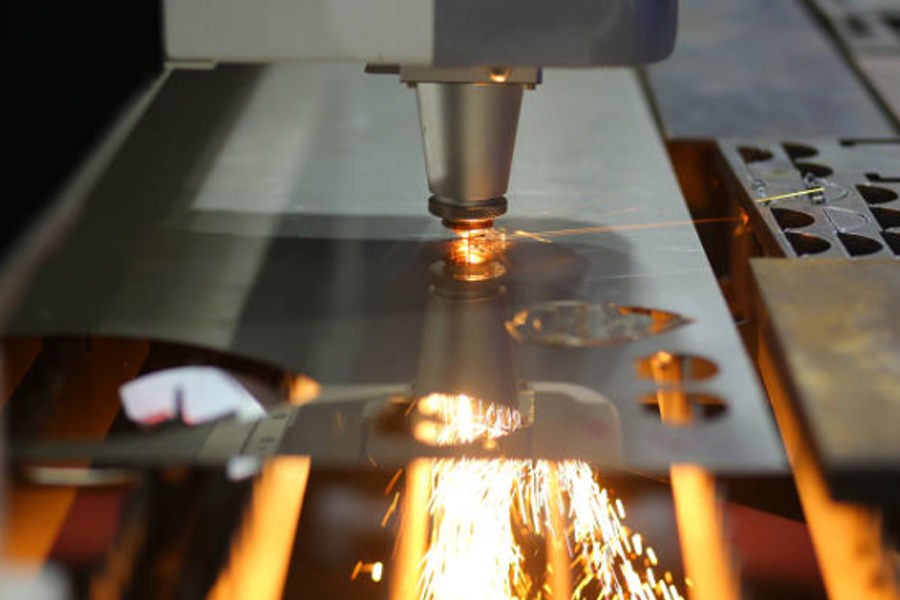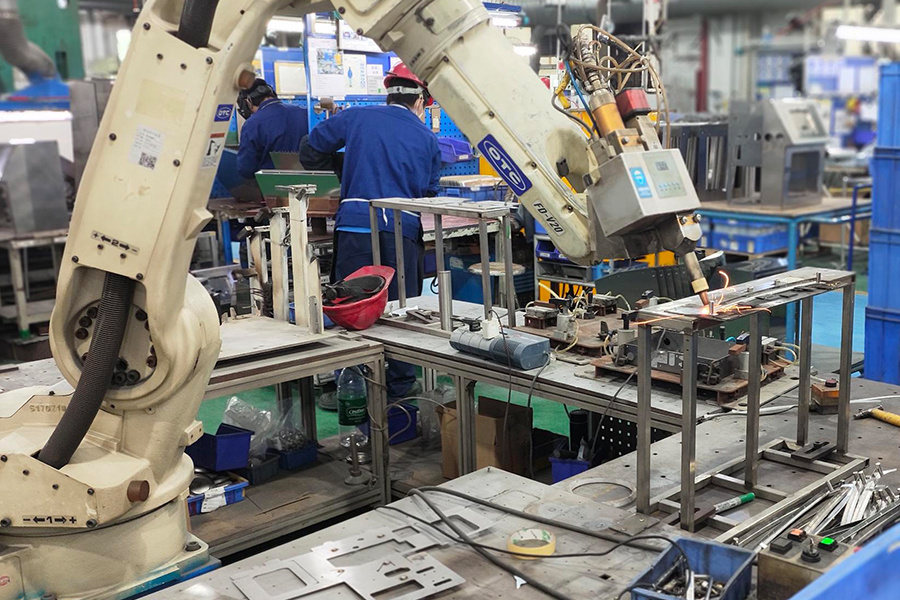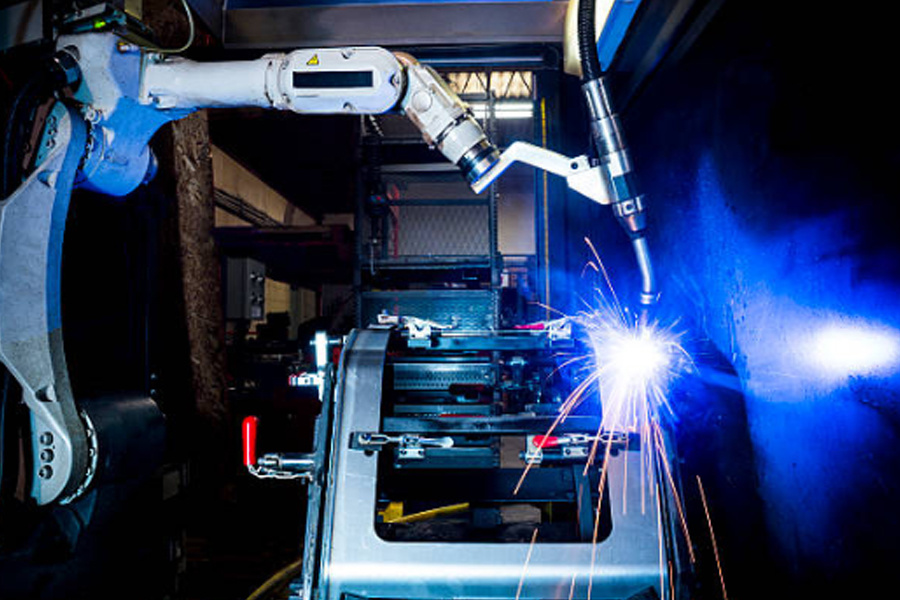Dual Engines: CNC & Sheet Metal Synergy for Precision
Release time:
2025-05-09
CNC processing and sheet metal processing are the dual core technologies of precision manufacturing, each with its own advantages. CNC processing is based on subtractive manufacturing and has strong multi-dimensional cutting capabilities; while sheet metal processing is based on additive manufacturing and cold processing technology to achieve lightweight structural parts. Material selection is deeply adapted to industry applications, and the rise of composite materials promotes process integration.
In the modern industrial system, CNC machining and sheet metal machining constitute the dual core technologies of precision manufacturing. CNC machining achieves high-precision cutting of complex parts through digital control, while sheet metal machining converts metal sheets into structural parts through cold forming technology. The two complement each other in terms of process principles, material adaptability and application scenarios, and jointly promote technological upgrades in industries such as machinery manufacturing, automobiles, and electronics. With 20 years of technological accumulation, Chuntian Machinery has deployed sheet metal and CNC machining bases in Thailand and Malaysia respectively, building an efficient manufacturing network covering the world, and providing customers with full-chain solutions from design to mass production.

Core process comparison: technical division from cutting and forming to cold processing
CNC machining is based on subtractive manufacturing. Through the CNC system, the tool controls the milling, turning and other cutting operations on the blank to achieve micron-level precision. Its advantage lies in the ability to process complex curved surfaces. For example, the impeller components in the aerospace field need to be cut in multiple dimensions by a five-axis linkage CNC machine tool. Sheet metal processing belongs to additive manufacturing. Through cold processing processes such as laser cutting, bending, and welding, metal sheets are converted into thin-walled structural parts. Typical applications include the integrated molding of new energy vehicle battery shells. The two complement each other in terms of process logic: CNC processing is good at single-piece high-precision customization, while sheet metal processing is suitable for mass production of lightweight structural parts.
Deep adaptation of material selection and industry application
CNC processing has high requirements for material hardness and toughness. Commonly used materials include aluminum alloys (such as 7075-T6), titanium alloys (such as TC4) and high-strength steel (such as H13 mold steel). Taking medical equipment as an example, CNC-processed stainless steel joint parts must meet the biocompatibility requirements of ISO 13485 standards. Sheet metal processing focuses more on the forming performance of materials. Cold-rolled sheet (SPCC) is the first choice for home appliance shells because it is easy to bend, and galvanized sheet (SECC) is widely used in automobile chassis due to its corrosion resistance. It is worth noting that the rise of composite materials (such as carbon fiber reinforced plastics) is promoting the integration of the two processes. For example, after CNC processing completes the composite mold, the mass production of lightweight structural parts is achieved through sheet metal processing.

Deep integration of technological innovation and industry trends
Intelligent upgrade: CNC processing introduces AI algorithms to optimize tool paths, and reduces processing errors to within ±5μm through real-time monitoring systems; sheet metal processing uses industrial robots to achieve automatic calibration of bending angles, and the yield rate is increased to more than 98%. The MES system deployed by Chuntian Machinery in its Malaysian factory can realize real-time cloud adjustment of CNC processing parameters, and the order response speed is increased by 40%.
Green manufacturing transformation: CNC processing reduces the use of cutting fluid through dry cutting technology, while sheet metal processing uses laser cutting instead of traditional stamping, and the material utilization rate is increased from 65% to 85%. The photovoltaic power supply system introduced by the Thai factory reduces the unit energy consumption of sheet metal processing by 20%, which meets the requirements of the EU RoHS environmental protection directive.
Process collaborative innovation: In the manufacturing of 5G communication equipment, after CNC processing completes the precision cavity of the heat dissipation module, the seamless splicing of the shell is achieved through sheet metal processing, and the heat dissipation efficiency of the final product is 30% higher than that of the traditional solution. This combination of "precision cutting + thin-wall forming" is becoming the mainstream technical route in the field of high-end manufacturing.
The technological evolution of CNC processing and sheet metal processing is essentially the product of the deep integration of digital control and material science. Chuntian Machinery has achieved the strategic synergy of "Southeast Asian production capacity + global service" through the dual base layout in Thailand and Malaysia, and can quickly respond to customers' full-cycle needs from prototype development to large-scale production. In the future, with the penetration of industrial Internet and additive manufacturing technology, these two processes will further develop in the direction of "high precision, low energy consumption, and full-process digitalization", becoming the core engine driving the upgrade of intelligent manufacturing.
FAQ
Q1: How to choose CNC processing and sheet metal processing?
A1: If the parts require complex internal structures (such as hydraulic valve bodies) or high-precision surfaces (Ra≤0.8μm), CNC processing is preferred; if it is a thin-walled shell part (thickness ≤3mm) and needs to be mass-produced, sheet metal processing has more cost advantages. The two can also be used in conjunction, such as CNC processing of key connecting parts and sheet metal processing to complete the peripheral frame manufacturing.
Q2: What is the impact of material properties on the processing technology?
A2: High-strength aluminum alloys (such as 6061-T6) are suitable for CNC milling, but attention should be paid to deformation caused by cutting heat; stainless steel (SUS304) is prone to rebound when sheet metal is bent, and needs to be optimized through pre-bending compensation algorithms. For titanium alloys (Ti-6Al-4V), CNC processing requires diamond-coated tools and a high-pressure cooling system.
Q3: How to choose the surface treatment process?
A3: CNC machined parts are often anodized (e.g. hard anodized film thickness ≥ 25μm) or PVD coating to improve wear resistance; sheet metal parts are often powder sprayed (film thickness 60-80μm) or galvanized (coating thickness 8-12μm) to enhance corrosion resistance. Chuntian Machinery provides a full range of surface solutions from blackening to electrophoretic coating to meet the needs of different application scenarios.
Key Words






